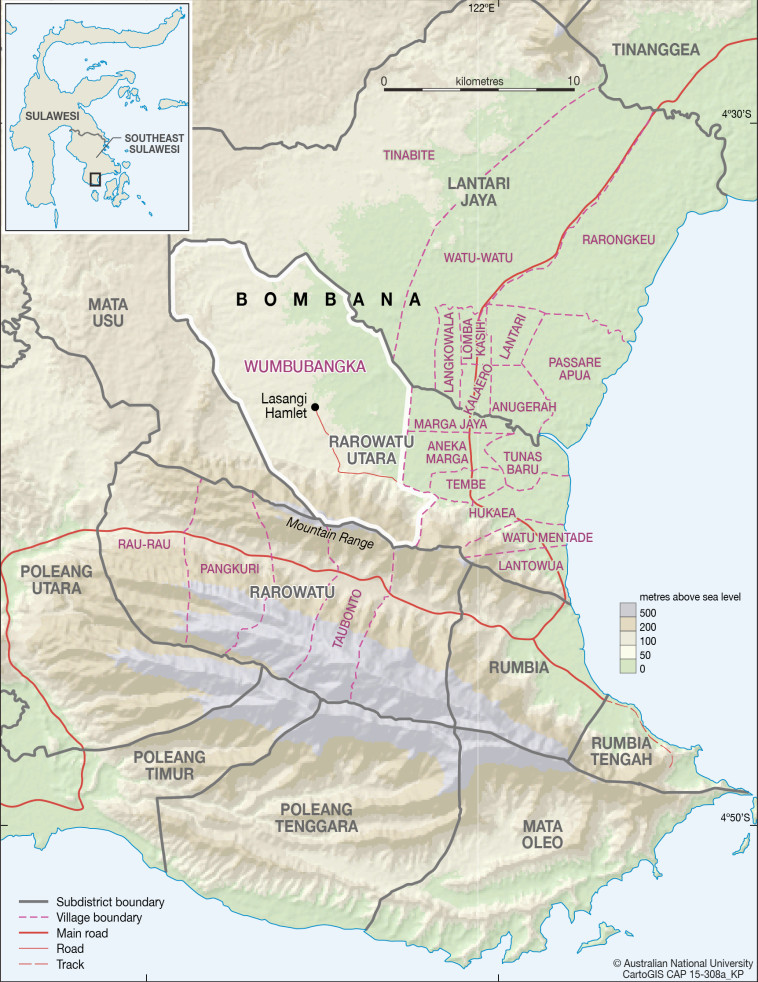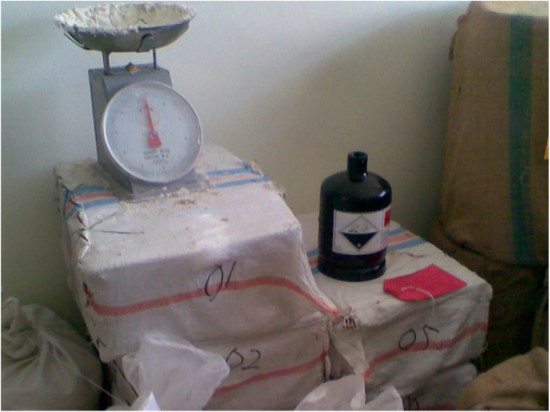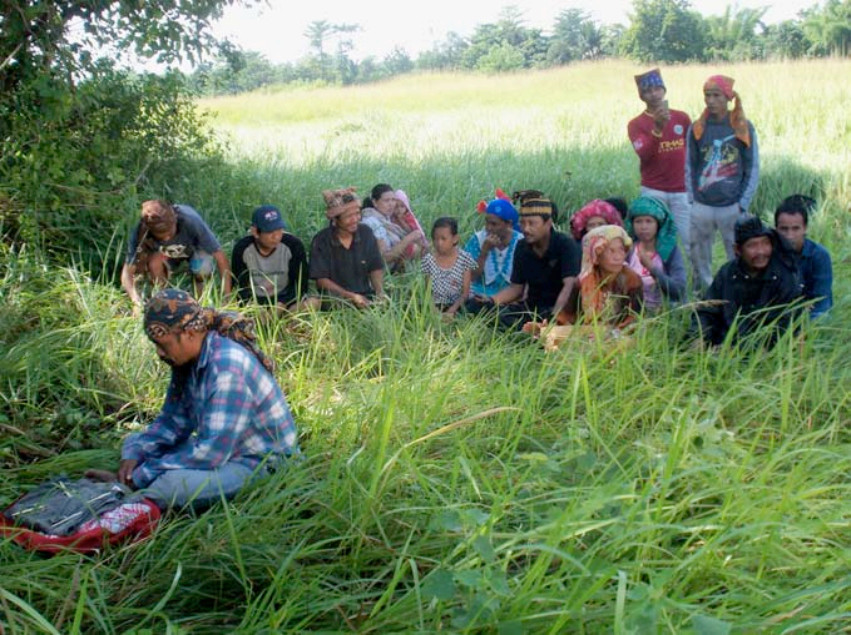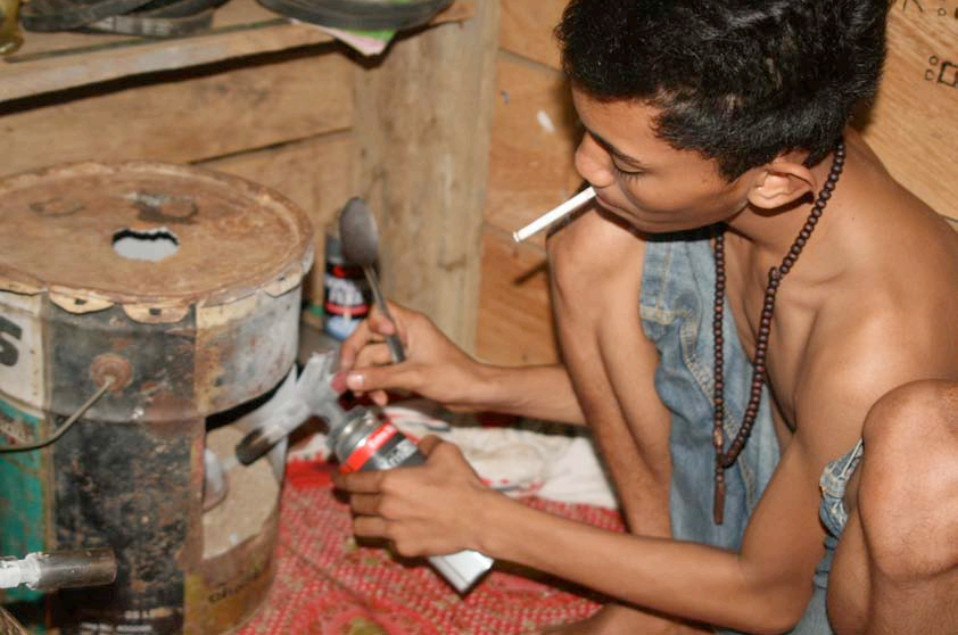Improved market chain monitoring and recognition of sociocultural dynamics are important for central mercury control
The United Nations Environment Program (UNEP) recently reported artisanal and small-scale gold mines (ASGM) as one of the main contributors to mercury discharge. Small-scale miners commonly use mercury in the final stages of processing ore as an economical way to amalgamate gold flecks into nuggets.
Indonesia has more than 800 ‘gold rush’ sites scattered across the archipelago, many of them recent. In the district of Bombana in Southeast Sulawesi Province, a media report of a gold strike in 2008 resulted in local people panning and digging, and an influx of over 60,000 gold prospectors. During the period of 2013–2014, a year-long ethnographic study was conducted by the authors to investigate gold mining practices in Bombana. In two mining areas that we studied, Rau-rau and Wumbubangka, use of mercury was a common practice and observable throughout the gold production cycle. In this article, we discuss the governance issues in mercury distribution, control and use, and social dimensions that complicate its regulation.
The mercury cycle
In the industrial environment, mercury (Hg) can be taken up by organisms through various pathways including inhalation of vaporised mercury, ingestion of contaminated water, direct skin contact with affected water and sediment or, in the case of gold mining, with gold produced by using mercury. Mercury can pass through the blood-brain barrier as well as breast milk and the placenta. One of the most direct and dangerous modes of uptake of mercury is said to be inhalation of mercury vapour.
Mercury intoxication can cause severe lung damage, neurological problems, tremors, skin rashes, ataxia, insomnia and kidney abnormalities. In many developed countries, use and disposal of mercury is now regulated in response to these risks.
Mercury in Bombana’s catchments
In the district of Bombana, people are exposed to mercury through ingesting contaminated water, inhaling vaporised mercury and having direct skin contact with the water, sediment and gold during mining operations.
To determine mercury levels in Bombana, airborne, water and sediment samples were collected by specialists and researchers assigned on a project funded by the Australian Department of Foreign Affairs and Trade (DFAT). Specialists from NGO BaliFokus measured airborne mercury while a team of researchers from the Australian National University, Charles Darwin University and Haluoleo University conducted water and sediment sampling within two major catchments in the districts of Kasutahi and Langkowala.

Bombana, Southeast Sulawesi. (CartoGIS, College of Asia and the Pacific/ANU)
Airborne concentrations of mercury were measured in two river catchment areas in places where mercury amalgam burning typically occurs, such as in shops which buy gold. The highest concentration measured was 54,931 nanograms per squared metre (ng/m3) – more than double the Indonesian safety standard (> 25,000 ng/m3) and far exceeding the World Health Organisation (WHO) and US Department of Health and Human Service’s safety standard of 1000 ng/m3.
Concentration of mercury in stream waters as well as in bed sediments was measured through samples selected to cover upper, middle and lower parts of the two catchment areas where gold production or processing activities were identified. The results demonstrate accumulation of mercury in the system, in some places at concentrations between 70-520 µg/litre, far higher than what is considered safe by the Indonesian standard (~1 micrograms per litre (µg/litre)) or even WHO’s standard (6 µg/litre for an adult of 60-kilogram bodyweight with daily water consumption of 2 litres).
A team of Indonesian and Japanese scientists, Basri, Sakakibara and Sera, recently reported mercury contamination in the hair of miners in Rau-rau and Wumbubangka . 70 miners were selectively chosen based on categories of distance from mining area and exposure to mercury, and then compared with eleven individuals of a control group. The analysis concluded that median mercury concentration in the hair of both directly exposed individuals (12.82 µg/g hair) and indirectly exposed ones (7.64 µg/g of hair) exceeded the safety standard as defined by the German Human Biomonitoring I (HBM I) threshold limit (1 µg/g of hair = normal; 5.1 µg/g of hair = high).
Ambiguous regulations
The demand for mercury has increased gradually since Indonesia first started importing it in 1989. Between 1989 and 2013, mercury imports grew from 154 to 366 tonnes, or 42 per cent. Most mercury is stocked by registered importers and distributed through market chains by registered distributors, many of them well-known pharmaceutical companies.
The management and distribution of mercury is currently regulated by National Government Regulation No. 74/2001 Regarding the Management of Hazardous and Poisonous Substances and the recent Ministry of Trade Regulation No.23/M-DAG/PER/9/2011 Regarding the Purchase, Distribution and Monitoring of Hazardous Substances.
Only registered entities can import and distribute mercury. The central, district and provincial governments share responsibility for registering these business entities and monitoring and evaluating their trading activities. We observed little monitoring by government at our field site, possibly due to officials’ ignorance or misperception of the toxicity of mercury and the consequences of its discharge into the environment. For example, one division head of a district department tasked with monitoring the environmental impact of district-level development projects explained, ‘As I recall, mercury is not hazardous, it should just be restricted. So, it’s not forbidden (haram). If people want to buy and use it to make a living we cannot intervene.’
This official claimed that while safety thresholds of particular substances in the environment may be clearly set, local government offices had little capacity to determine whether contaminant substances exceeded these thresholds. The official then showed the authors several environmental impact assessment (AMDAL) reports compiled on behalf of mining companies by ex-government officials and local academics. In these reports, required for the issuance of licences, companies disclosed intentions to use mercury in their gold processing throughout the licence period. However, these reports did not contain explanations about managing mercury vapour arising from amalgamation, processing waste water for mercury, measuring mercury content or mercury safety thresholds. Many of these AMDAL reports had been reviewed by a regional government AMDAL committee and subsequently granted an environmental management licence from the district head.

Packed mercury sits in the warehouse of a registered distributor. In the field, the authors found that government monitoring was rare. (Yuyun Ismawaty)
However, three major mining companies investigated by the authors admitted that they rarely, if ever, prepared AMDAL reports. Mining companies developed clientelist relations with local powerful actors offering bribes, such as sub-contracting rights within the mining licence area, in order to receive permits.
But in spite of the evidence of mercury use by companies, local media and government officials are quick to blame small-scale miners for causing mercury contamination. This blaming is in line with efforts by the district government to eliminate informal, illegal or non-licensed mining, while facilitating large companies to obtain licences.
Other government officials we met demonstrated a similar lack of knowledge about mercury. For example, a health practitioner at a community health centre commented, ‘I never realised that it [mercury] can be dangerous to humans. I mean the dentists use [mercury] to fill cavities, so could it be that bad?’
As a police officer in charge of surveillance of illicit substances trade put it:
‘I know about mercury, but is it illegal? We can’t just go out and chase people for something that is not illegal. That [mercury] is different from narcotics and illicit drugs, which we have knowledge about and are specifically tasked to deal with… and also, investigations need funds, and we do not have funds for doing that… And even if mercury is illegal, what constitutes its illegality? Is it because of possession, selling or abuse?’
Indeed, while the current legal framework specifies how much mercury in the environment is harmful, it does not identify licit end users or under what conditions they can possess, use and dispose of mercury. Currently, many end users have access to mercury. Dentists purchase mercury from registered distributors for clinical use as amalgam and gold miners purchase it from petty traders or local gold buyers.
Mercury use in small-scale mining
Small-scale gold mining techniques use mercury as an economical way to capture gold flecks. Many miners in Bombana who use or have been exposed to mercury use vernacular terms for it, such as air raksa (mercury), air keras (hard water) or perak (silver). This plethora of terms obscures the true identity of mercury. Most were unaware about how to safely use mercury or the hazards of its use.
Bakri, a local miner who used a dompeng (sluice box) to extract the grains of gold, explained that while he never used mercury he did use perak, his term for liquid mercury which he purchased and stored in a 200ml energy drink bottle.
Iwan, an owner of a tromol (gold processing mill) consisting of several rotating drums to extract gold through centrifugal force, used the vernacular term air keras for mercury. Iwan’s workers picked up mercury amalgam from the drums with their bare hands and inhaled vapour while subsequently burning it to get the amalgamated gold nugget.
Community health centre staff and village midwives used the term air raksa to refer to mercury. Sukma, the village midwife explained that her thermometer used air raksa but was unsure whether she would dare to hold it in her bare hands like many women miners in the village. Nor could Sukma explain whether, for example, the sudden paralysis suffered by a young local girl might be mercury-related or a spirit attack as many in the village believed.
The indigenous Moronene people of Bombana understand bala (bad things), such as disease, to be caused by the anger of the guardian spirit of the land (Nteiwonua) in response to moral transgressions. Rituals are practised by the Moronene to avoid such dangers. For example, the mooli ritual asks permission of the spirit of the land prior to using particular places through offering gifts. The bilangari ritual is used to avoid hazards. Bilangari experts predict times within a day of a month, or within a lunar calendar year, that are considered moniu (good) or mobui (bad). Local miners use ritual experts to select a place to mine, to determine the time to buy new machinery or to install their dompeng.
This underlying belief that disease is caused by transgression, and the efficacy of ritual to avoid hazards, influences the way some miners disregard the risks associated with using mercury. That is, an explanation of the health risks of mercury does not accord with their understandings of the causes of illness and death, and the ways to ameliorate risk.

A Mooli ritual is performed to offer gifts to the spirit of the land, prior to using the land for farming or other purposes. (Omar Pidani and Fitrilailah Mokui)
Recent initiatives
Indonesia has launched a National Action Plan for the elimination of mercury use in gold processing (2014–2018) and is preparing to sign the Minamata Convention in 2017. Both actions demonstrate Indonesia’s recognition of mercury as hazardous.
These initiatives must be complemented by improvements in the current legal framework – specifically, how to monitor the distribution of mercury along the market chain. It must be clearly elaborated who is permitted to use mercury, as well as the conditions for its use and discharge. Further, effective monitoring and enforcement will require improvement in capacity and infrastructure at the local level, as our examples above show.
At the bottom of the market chain, access to information as well as social and cultural understanding of disease and risk, influence end users’ understanding of mercury and its negative effects on health. These understandings must also be taken into account in any effort to change mercury use practices.
Omar Pidani (omar.pidani@anu.edu.au) is a lecturer in the Faculty of Forestry and Environmental Science at Haluoleo University in Indonesia and a PhD candidate in the Department of Anthropology at the Australian National University.
Fitrilailah Mokui (fitrilailah.mokui@anu.edu.au) is a lecturer in the Faculty of Public Health at Haluoleo University in Indonesia and a PhD candidate in the Department of Anthropology at the Australian National University.












